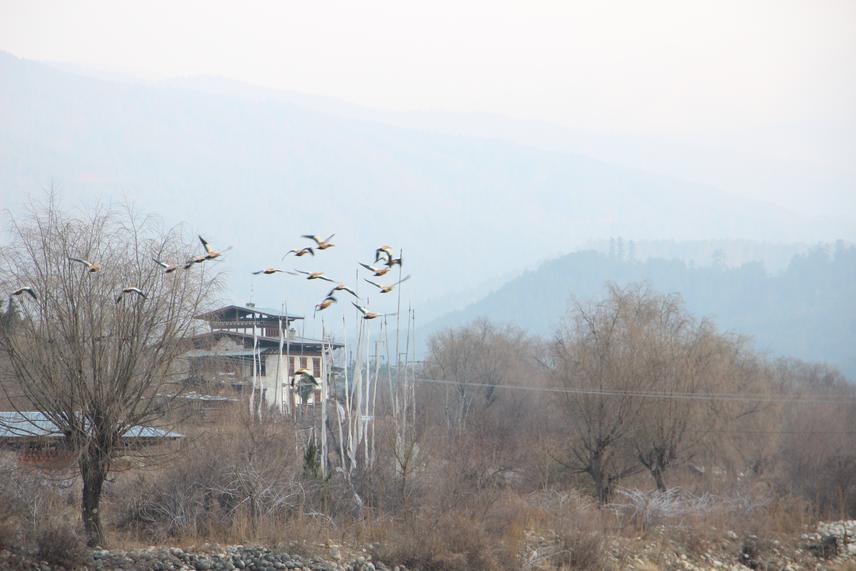Jambay Dhendrup
This research will assess the community structure of water birds and their habitats along the Chamkhar River in Bumthang district, which is soon to be dammed for hydropower. It will generate a benchmark information on water birds that can later be compared to understand the rippling upshot of damming of rivers in the country.

Birds at study area.
Composition diversity of water birds is a capital component in ecology and serves as the agent for sustainability of ecological system and supports human livelihood (Magurran, 1988). The change in abundances and distribution of water birds can give indication of environment health and improve the level of succession cycle. Diversity and habitat use of water birds in lakes and rivers has been widely documented in other parts of the countries. Conversely, till date the studies focusing on community structure and habitat use by water birds in relation to hydropower dam is not that pronounced in our country.
Bhutan has diverse avifauna of 699 species recorded so far (Ministry of Agriculture and Forests, 2015). Out of that, 106 are water bird species of which 1 is endangered, 2 near threatened, 3 vulnerable and 14 species are known to be globally threatened (Royal Society for Protection of Nature, 2005). The study area is also home to many water bird species and other wildlife. However, it is under tremendous pressure with rapid socioe-conomic growth and increase in population in the region. One such disturbance emerging very soon in the area is the construction of hydropower dams. It will disturb and permanently deteriorate the life of water birds and their habitats. Therefore, it is high time to maintain scientific documentation of the community structure of water birds, which can provide a benchmark information for study by the conservationists and researchers in future.
Point count method for the water bird survey will be adopted from Gregory et al. (2006) and the assessment of habitat use by the birds along the riparian zone and reaches will be conducted as per Borghesio et al. (2010) and Bremen (2004) respectively. The study will be followed by community sanitization on importance of water birds in ecosystem. The reports on community structure of water birds, their habitat use and conservation prospects will be published.